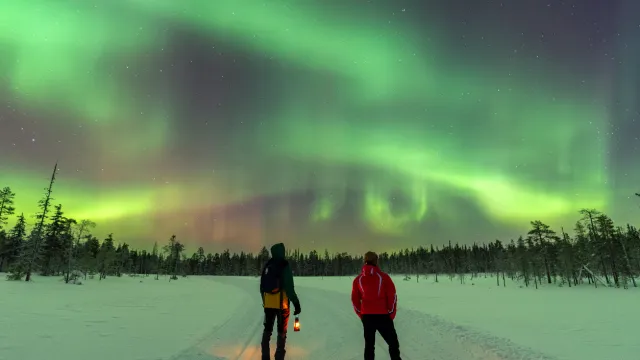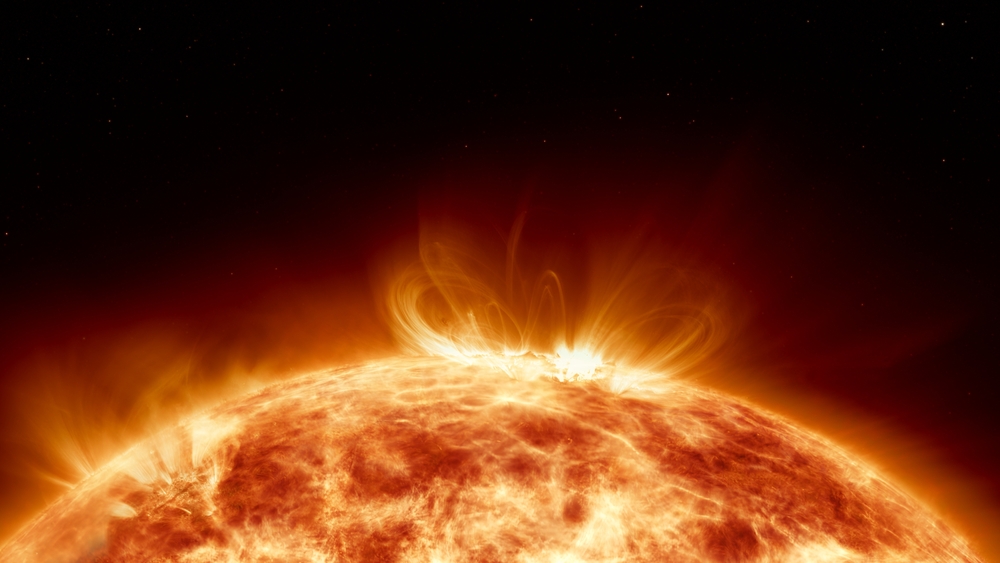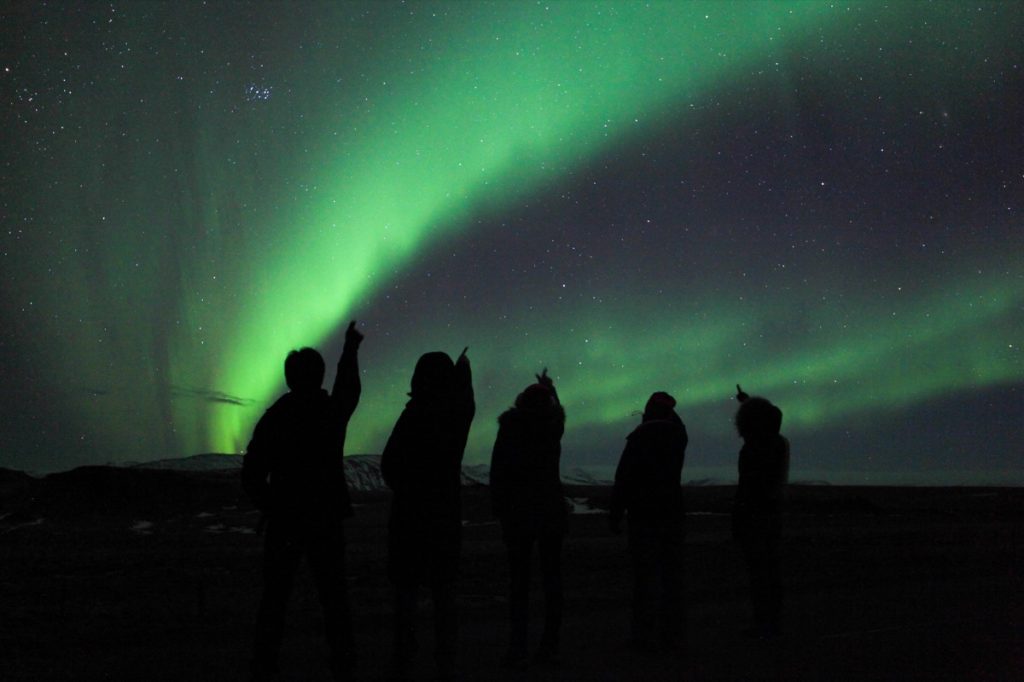10 States Could See the Northern Lights Tonight Amid Geomagnetic Storm

For most people, the only chance to see the Northern Lights involves traveling someplace where they’re a common sight. But every so often, the much sought-after natural phenomenon can push past its usual boundaries and surprise us with a dazzling nighttime light show. And forecasts now say that people in 10 states could see the Northern Lights tonight amid a geomagnetic storm. Read on to see which areas could get a glimpse and why the aurora are so active right now.
RELATED: Parts of the U.S. Will See the Northern Lights in 2024—Here’s Where and When.
A large solar eruption could bring the Northern Lights to an expanded viewing area.

If you’re looking for some genuinely unique pre-Valentine’s Day plans, you might just be in luck. Scientists say the Northern Lights could appear in nearly a dozen states tonight following a solar event, Nexstar reports.
In a post to X (formerly Twitter) on Feb. 9, the National Oceanic and Atmospheric Administration’s (NOAA) Space Weather Prediction Center (SWPC) announced it had detected a level S1 “minor solar radiation storm event” from the sun that day. The agency said the burst increased the average background amount of solar energetic particles reaching Earth tenfold.
On Feb. 11, SWPC then announced it had issued a “minor-moderate” geomagnetic storm watch for Feb. 12 through Feb. 14. The agency says that the timeframe could see aurora developing in the sky in some places due to the increase.
RELATED: “Devil Comet” With Horns Is Racing Toward Us—Here’s When and Where It Arrives.
The sun has become more active as it progresses through its solar cycle.

Being able to see auroras has become a common bucket list item due to how mystifying and dazzling they are in the night sky.
They appear when “electrons from space flow down Earth’s magnetic field and collide with atoms and molecules of the upper atmosphere in a ring or oval centered on the magnetic pole of Earth,” according to the SWPC. “The collisions produce light much like how electrons flowing through gas in a neon light collide with neon and other gasses to produce different colored light bulbs.”
The type of solar activity that generates these spectacular light shows has also recently become more common. The sun entered Solar Cycle 25 in Dec. 2019, which is the latest 11-year period our star will see a spike and lull in events such as coronal mass ejections (CMEs) and solar flares, according to NASA. Scientists now believe our star might be reaching its peak slightly ahead of schedule—which could mean even more dazzling Northern Lights displays throughout this year, NPR reported.
RELATED: 8 Best Destinations for the Next (and Rare) Total Solar Eclipse.
Northern and Midwestern states could see the aurora appear tonight if conditions are right.

According to the SWPC’s notice, the effects of geomagnetic storms are still possible through this evening—including visible aurora. And while last night’s outlook included more than a dozen states, the latest forecast could still impact nearly as many tonight.
The current view line for the Northern Lights runs across the northernmost states through the Midwest and up into the Northeast. Those within the range include Alaska, Idaho, Michigan, Minnesota, Montana, North Dakota, South Dakota, Washington, Wisconsin, and the northern tip of Maine. By tomorrow, the forecast shows the view line will recede north above the Canadian border, leaving only Alaska within range.
RELATED: NASA Says “Lost” Asteroid Could Collide With Earth in October.
Local weather could affect viewing conditions.

Part of what can make spotting something as rare as the Northern Lights even more frustrating is that solar conditions also have to line up with local weather patterns for visibility. According to Fox Weather, cloud cover could be an issue in some of the states tonight, with 42 percent of the sky expected to be obscured in Minneapolis; 57 percent in Sault Ste. Marie, Michigan, and Bismarck, North Dakota; 68 percent in Caribou, Maine; and 81 percent in Cut Bank, Montana.
But while you can’t control the weather, there are a few ways to help ensure you get the best views of the aurora. As with a stargazing excursion, it’s best to pick someplace far away from city lights and other glare to ensure plenty of darkness in the sky, SWPC suggests. And with winter temperatures on the rebound, it’s also important to dress warmly and comfortably for the conditions.
There’s no limited window to when the Northern Lights could become visible during the given timeframe. However, the agency says they’re most prevalent within two hours before and after midnight.
- Source: SWPC: G1-G2 (MINOR-MODERATE) GEOMAGNETIC STORM WATCHES 12-14 FEB, 2023
- Source: SWPC. Aurora Tutorial
- Source: NASA: Solar Cycle 25
- Source: SWPC: Aurora Dashboard
- Source: SWPC: Tips on Viewing the Aurora